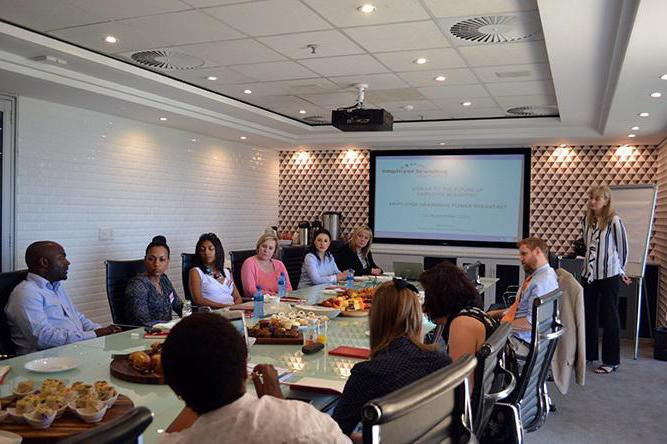Currently, many managers are thinking about how to improve staff efficiency. As a rule, the easiest way is to increase salaries or pay bonuses. But in modern realities, companies do not have the ability to constantly motivate employees with cash. The phenomenon of intangible stimulation comes to the fore.
What it is?
Intangible incentives refers to the promotion of workers without the use of cash resources. It is this type of motivation that has recently become more in demand and effective. For many people, career growth, comfort in the workplace, and a friendly atmosphere within the team are important. If the company is interested in its employees, they will answer the same. Non-material stimulation of labor activity will help employees to feel more confident in the organization, as well as increase the level of loyalty.

This type of motivation is perfect for the category of personnel who are striving for development and, accordingly, promotion. There are workers whose only desire is to not be touched and paid wages in a timely manner. Non-financial incentives will not help such workers. In order to determine which of the employees belongs to a particular category, it is recommended to test.
Types of Incentives
The most popular classification includes a division into two groups: tangible and intangible motivation. There is also a distribution of incentives for individual and collective.
Material incentive is the remuneration of employees, the issuance of bonuses and bonuses. This type of motivation is considered the most effective, since most people, regardless of position, value cash rewards. The company needs to annually review the wage system and add bonuses for quality work.
There is also non-material motivation of an indirect nature, which is expressed in the issue of paid sick leave and leave. In addition, companies sometimes provide health insurance, benefits for a loan, training for continuing education, etc.
Non-material incentives are expressed in providing career opportunities, issuing letters of appreciation and thanks from management, good relations in the team, and events. The latter are great for enhancing the cohesion of workers. This, in turn, will positively affect their performance.

The concept of team building is very popular in Western countries, which means “team building”. It involves joint trips to various competitions, participation in recreational activities, sports competitions. Russian companies are gradually starting to implement such a practice.
Despite the fact that intangible motivation does not imply the issue of cash to employees, this does not mean that the company should not invest in its implementation.
Principles of building an incentive system
A set of measures aimed at developing intangible motivation is created individually for each company. When creating a system, it is necessary to take into account the corporate culture of the organization, development opportunities, goals and objectives.No less important factors in this matter are gender and age of employees, life position and status. Thus, it is possible to understand what priorities a person has in work and life.
But despite the individuality of each enterprise, there are general fundamental principles on which absolutely all companies must rely to build a motivation system. There are three main points:
1. When creating a system, you need to rely on the goals and objectives of a single company. Choosing incentive methods, one should take into account how they will help employees to implement strategic plans.
2. An important element is the company's resources, its budget. It is easy to imagine a situation when issuing certificates of professional development to employee N is an excellent motivating decision, but the organization cannot allocate funds for this.
3. The individual needs of workers. Of course, it is easier to identify the requests of the average employee, the same for all. But this method is not as effective as creating motivators for each employee.
Forms of Intangible Motivation
The effectiveness of non-material incentives can hardly be overestimated, because far from everything can be bought for money. Staff loyalty, a good attitude to leadership, a friendly atmosphere are fundamental provisions without which chaos will occur in the company. Intangible incentives include:
1. Creative component. Here it is necessary to give employees the opportunity to prove themselves, improve their qualities through training or business trips. Self-realization is very important for an ambitious person, and this fact cannot be deprived of attention.

2. Organizational motivation. The basic principle here is to increase the feeling of satisfaction with work in the company. This is achieved by attracting workers to solve problems of the enterprise, providing voting rights. Thus, the employee will be confident in the future, will become independent.
3. Moral motivation. It is expressed mainly by public incentives in the form of letters, medals or simply verbal thanks from the administration. This also includes stimulating staff with free time, that is, the possibility of a flexible work schedule, long holidays, time off, etc. This method will help the employee cope with nervous tension and physical fatigue.
4. Training. Non-material incentive measures can be carried out both within the organization and outside it. Employees always appreciated the opportunity to develop, improve their skills. The most effective ways of training inside the company are rotation and change of workplace. Outside the enterprise, raising the level of their knowledge and skills is quite costly for the organization, however, it brings great results.
Requirements for the non-material incentive system for employees
There are five basic rules that will help build a competent concept:
1. She must solve the tactical tasks of the company. That is, the motivators chosen for a particular organization should be aimed at solving primary problems.
2. The system should cover all employees. This means that the chosen incentive methods should affect both managers and production workers.
3. An important factor is the stage of development of the organization. For example, enthusiasm is a motivator for a family business. When a company moves to a new stage, intangible incentives should also develop and pose new challenges.
4. The right choice of methods. Intangible ways of stimulation should be aimed at creating those factors that motivate all employees. To do this, you need to collect information about them and find out the needs.
5. Continuous development. The monotonous system of motivation will become obsolete over time and will no longer prompt action.Therefore, you need to take care of the annual development of a new concept.
Japanese practice
It's no secret that the Land of the Rising Sun is one of the most developed in terms of attitude to staff. In the middle of the XX century there was a major breakthrough in the state’s economy, called the “Japanese miracle”. The country was able to achieve such success through the introduction of three principles in the personnel management system:
- lifetime hiring;
- work experience and age affect the possibility of promotion;
- organization of the trade union movement.
Thanks to this, Japan avoided downtime in production, moreover, it became a country that is still one of the first to introduce various latest technologies into our lives.

The non-material incentive for employees is based here on group psychology. People get together in groups and perform production tasks together, which contributes to team building and the achievement of their personal, individual goals.
Intangible Motivation Tools
Each company builds a system of employee incentives based on its goals and principles. It always looks differently, but in general, you can imagine it in this form:
- Benefits, implying a decrease in the work schedule. This refers to some holidays, weekends, etc. Recently, a “bank of non-working days” has gained popularity. The company gives the employee several days a year, which he can dispose of as he wishes.
- Activities not related to work. Stimulating staff will help create a friendly atmosphere in the team. Various celebrations, trips and excursions are perfect for these purposes.

- Recognition of the merits of the employee. This method of motivation is one of the most effective. Those employees who helped the company and gave impetus to its development deserve rewards and assistance in career advancement.
- Material reward. This is not the issue of cash bonuses, but non-financial compensation. For example, the provision of various benefits and health insurance. Once again, you can emphasize the importance of the employee for the company, giving something symbolic.
Incentive methods that do not require investments
In total, there are three types of intangible incentives from investments:
- not requiring money;
- investments distributed addresslessly;
- Options that require targeted investments.
Consider each of these types in more detail. Of the motivators for the implementation of which investment is not required, congratulations on the holidays, especially happy birthday, can be distinguished. Warm words from the CEO of the company and other employees displayed on the stand will pleasantly surprise the birthday boy and contribute to labor productivity.
Intangible incentives can also be expressed in the creation of a conditional “board of honor”. The names of employees who showed themselves better than others will be displayed on the stand. Various achievements of employees, participation in city and Russian events will be encouraged by management in the form of oral or written praise.

An effective method of motivation is to create a table called "You can’t do this." There the situation is displayed, how the employee acted in it and how it was necessary to do. At the same time, it is better not to open the specific names of the people who made a mistake. Employees, seeing this table, will learn from their mistakes and not repeat them in the future.
The developed staff adaptation system will make a significant contribution to staff incentives, especially for beginners. Indeed, situations often arise when a new employee comes to a company and does not know what to do and where to go. From the outside, he looks uncertain and casts doubt on his existence in the organization. And if there is a competently built adaptation system, involving a mentor, such cases will not be repeated.Electronic presentations will facilitate the process of getting to know the company.
Motivators that require targeted investments
They are aimed at improving the quality of life of the organization. Among them are the following:
- food at the expense of the enterprise;
- providing uniforms or workwear;
- medical insurance;
- the provision of subscriptions to the business club;
- improvement of working conditions.
The last factor includes improving the quality of fixed assets, such as computers, and improving working conditions, such as installing an air conditioner in an office.

Organization of corporate events will have a positive effect on raising the team spirit of the company. In addition to the entertainment part, it is recommended to introduce a bit of an official one. For example, dedicate a speech to the success of a company or individual employees. In the entertainment part, you can add a competition for uniting employees, for example, "Guess your colleague in the photograph of his child."
Incentive methods requiring targeted investment
Here the system is divided into two parts: motivators that can be used by a person who finds himself in a particular situation, and benefits provided to specific employees. Of the methods that require targeted investments, we can distinguish the following:
- financial assistance at the birth of a child, at a wedding, or, conversely, associated with tragic events;
- Granting a loan to improve housing conditions;
- partial or full payment of travel to the place of work;
- the provision of vehicles for the implementation of official purposes.
Types of tangible and intangible incentives are aimed at improving relationships in the company, as well as increasing labor productivity. Not in all cases it will be enough just to raise a salary for this. In modern conditions, non-material incentives are much more appreciated among employees, as it provides an opportunity to grow and develop in a professional and personal plan.